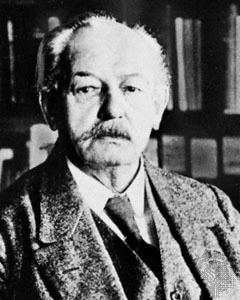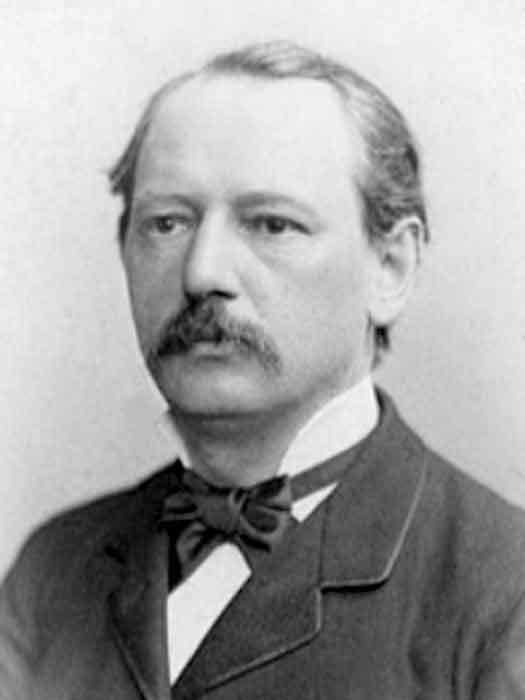Education University of Wroclaw Alma mater University of Breslau | Name Adolf Engler Role Botanist | |
 | ||
Known for Die Naturlichen Pflanzenfamilien Books Syllabus der Pflanzenfamilien | ||
Places to see in ( Berlin - Germany ) Botanischer Garten Berlin
Heinrich Gustav Adolf Engler (25 March 1844 – 10 October 1930) was a German botanist. He is notable for his work on plant taxonomy and phytogeography, such as Die natürlichen Pflanzenfamilien (The Natural Plant Families), edited with Karl A. E. von Prantl.
Contents
- Places to see in Berlin Germany Botanischer Garten Berlin
- Biography
- Plant taxonomy
- Phytogeography
- Recognition
- References

Even now, his system of plant classification, the Engler system, is still used by many herbaria and is followed by writers of many manuals and floras. It is still the only system that treats all 'plants' (in the wider sense, algae to flowering plants) in such depth.
Engler published a prodigious number of taxonomic works. He used various artists to illustrate his books, notably Joseph Pohl (1864–1939), an illustrator who had served an apprenticeship as a wood-engraver. Pohl's skill drew Engler's attention, starting a collaboration of some 40 years. Pohl produced more than 33 000 drawings in 6 000 plates for Die naturlichen Pflanzenfamilien. He also illustrated Das Pflanzenreich (1900–1953), Die Pflanzenwelt Afrikas (1908–1910), Monographien afrikanischer Pflanzenfamilien (1898–1904) and the journals Engler's botanische Jahrbücher.
Biography
Adolf Engler was born on March 25, 1844, in Sagan, Prussia, now Żagań, in western Poland as Heinrich Gustav Adolf Engler, and died in Berlin, Germany, on October 10, 1930.
He studied and obtained a PhD from the University of Breslau (now Wrocław, Poland) in 1866. After some years of teaching, he became, in 1871, custodian of botanical collections of the Botanische Institute der Ludwig Maximilian University München (Botanical Institute of Munich), remaining there until 1878, when he accepted a professorship at the University of Kiel, where he stayed until 1884, teaching systematic botany. Also in 1878, Engler was elected into Leopoldina, German Academy of Natural History. He went back to Breslau in 1884, as director of the Botanical Garden, succeeding Goeppert, and appointed professor of botany at the University of Breslau. From 1889 to 1921, Engler was a professor at University of Berlin, and director of the Berlin-Dahlem Botanical Garden, transforming it into one of the greatest botanical gardens of the world.
He visited several regions of the world, enlarging the knowledge of floristic distribution, especially of Africa.
Plant taxonomy
Besides his important work in general plant taxonomy, he was also an expert in some taxa, such as Saxifraga, Araceae, Burseraceae, and others.
Adolf Engler collaborated with several other great botanists, including Alphonse de Candolle on the Monographiae Phanerogamarum (Monographs of Flowering Plants), and C.F.P. von Martius on the monumental work Flora Brasiliensis (Flora of Brazil).
He founded the journal Botanische Jahrbücher für Systematik, Pflanzengeschichte und Pflanzengeographie (Botanical Yearbook for Systematics, Plant Phylogeny and Phytogeography, ISSN 0006-8152), published in Leipzig, Germany, which has continued in publication from 1881 to the present. In 2010, this publication changed its name to Plant Diversity and Evolution: Phylogeny, Biogeography, Structure and Function, ISSN 1869-6155.
Phytogeography
He was one of the pioneers in this field of science, highlighting the importance of factors such as geology on biodiversity, and defined biogeographical regions in 1879.
Recognition
He received the Linnean Medal in 1913. The International Association for Plant Taxonomy established the Engler Medal in his honour in 1986, to be awarded for outstanding contributions to plant taxonomy.
The journal Englera (ISSN 0170-4818) published by the Berlin-Dahlem Botanical Garden, Germany, is also named after him. Many genera (in various 'plant' groups) are named in his honour, such as Englerastrum, Englerella, Engleria, Englerina, Englerocharis, Englerodaphne, Englerodendron and Englerophytum.
